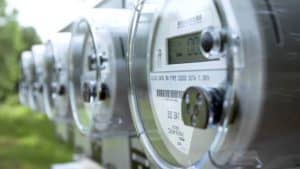SMART Idea - Demand Response
Demand Response - a sustainable solution to optimize energy efficiency
Demand response systems help to achieve the goal of improving the energy efficiency of a home or commercial building.Automated demand response (DR) and behavioral DR both focus on achieving better energy efficiency for buildings. Both DR systems improve the energy efficiency for the energy dependent appliances that are looped in with DR smart networks within buildings.
Various kinds of smart HVAC units (and other high-tech, smart major building appliances) work with DR systems. Both automated and behavioral DR methods are beneficial; both are good for residences and commercial buildings, and both focus on optimizing the energy efficiency of buildings.
Systems that work to manage use of a major energy-dependent component (smart HVAC units, smart major appliances) of a building to achieve better energy efficiency are known as demand response systems (also known as demand management systems). (NOTE: This article will mainly focus on smart HVAC units as the representative example of energy use by a major smart appliances of a home or building. Major smart building appliances also include smart hot water heaters, refrigerators, laundry machines, pool pumps, lighting, etc...).
Automated demand response
One type of technologically advanced energy efficiency system for buildings is known as a residential or automated demand response program. Automated DR is often a part of today’s smart grid. Although we just use the example of HVAC here in this article, DR can be applied to many smart building electrical systems and smart appliances. Automated demand response programs are generally programs in which utility companies are given a type of remote control over the smart, programmable, wi-fi enabled HVAC units that are in people’s homes.
Utilities can then reduce the power settings and temperature of the home during the afternoon and early evening hours. There is usually less need for HVAC during the day when people are at work or school. Smart HVAC systems can be similarly remotely adjusted by utilities during morning, evening, and nighttime hours. This can be very useful for those who don’t remember to turn down their thermostats at night.
DR can help to increase the energy efficiency of homes; saving energy and lowering the cost of electric bills both for the utility and the customer.
Here is a brief snippet from an article in Utility Dive about the global growth of automated (residential) demand response programs:
"Analysis from Navigant Research predicts global residential demand response capacity will more than triple in the next decade as utilities look to manage demand and reduce peak loads. New technology and use cases are driving the growth of residential demand response programs...growth in demand response programs, capacity, spending and revenue is occurring worldwide..." FROM - utilitydive.com/news/navigant-residential-dr-will-triple-by-2028-global-capacity
Behavioral demand response

As an alternative to automated DR, there are behavioral demand response programs, which leave control of a building's energy use in the hands of the owner. A smart, programmable, wi-fi enabled device – a smart meter – is set up in the home or commercial building; reads and records data from the building; such as the times people are actively in the building, and the changing temperatures throughout the year.
Smart meters also collect and organize data from smart HVAC units and other smart appliances with the goal of improving the energy efficiency of the appliance. This type of smart DR system is implemented to help maximize energy efficiency, and enable optimization of energy use of major smart appliances in a building.
Home energy management (HEM)
Smart meters provide data of energy use by major smart appliances in a building; data to be used in order to tell consumers how much energy was saved, and energy savings can be planned in the future by programming a building's smart appliances. Major appliances can remotely be turned off or turned down with a home energy management (HEM) device, in order to achieve optimal energy efficiency for the appliance, according to the data provided by the smart meter.
Data of energy use for a building's smart appliances linked into the DR system is sent from the smart meter to a HEM app. HEM apps can be found on a smart phone, PC, tablet, or dedicated HEM device; detailing how much energy was saved by using the DR system, what the financial benefit was, and what energy customers can do better in the future as far as optimizing the efficient energy use of appliances.
Similarly, the utility can optimize their energy generation based on data provided by smart meters and smart appliances; if the utility is also looped into the DR system. The process created by smart meters and smart appliances for energy customers and utilities is known as “two-way communication” for the energy system.
The use of the smart meter, coupled with a home energy management application, allows people access to major building appliances from anywhere; as changes can be made over one’s smartphone or tablet device.
Both DR methods are quite beneficial; and both work for residences and commercial buildings. With residential demand response programs, optimal energy efficiency adjustments are remotely managed and monitored by the utility. With behavioral demand response programs, a smart meter has to be installed in or on the building; and only requires a short time for the smart meter to record data necessary in order to produce optimal results that building owners can use to program major smart appliances.
Please see:
Please also see: